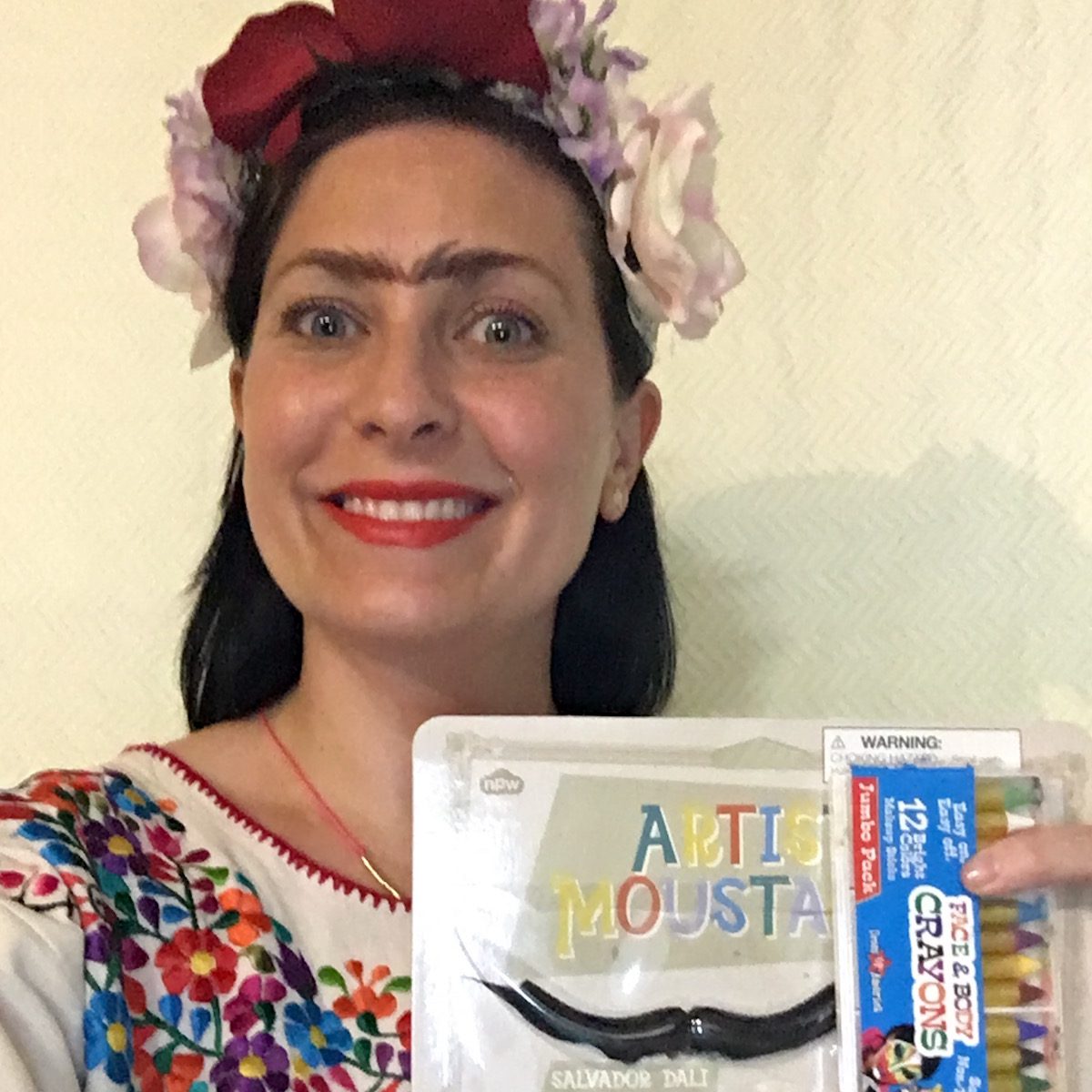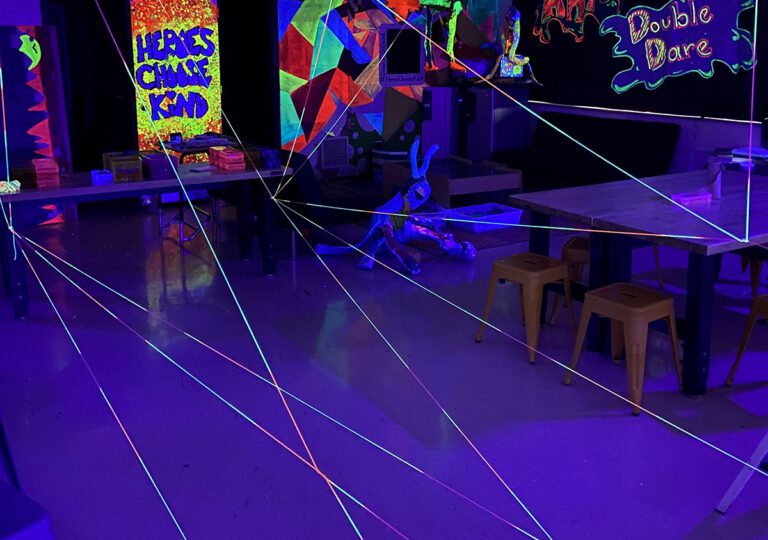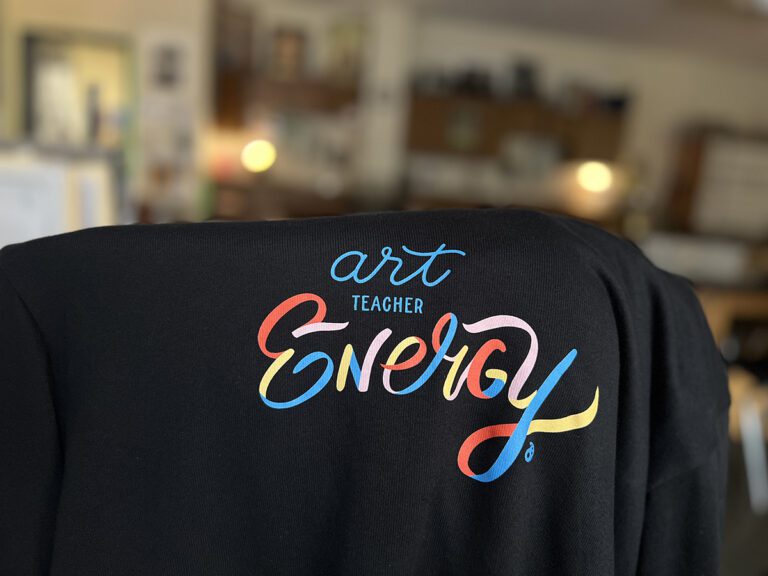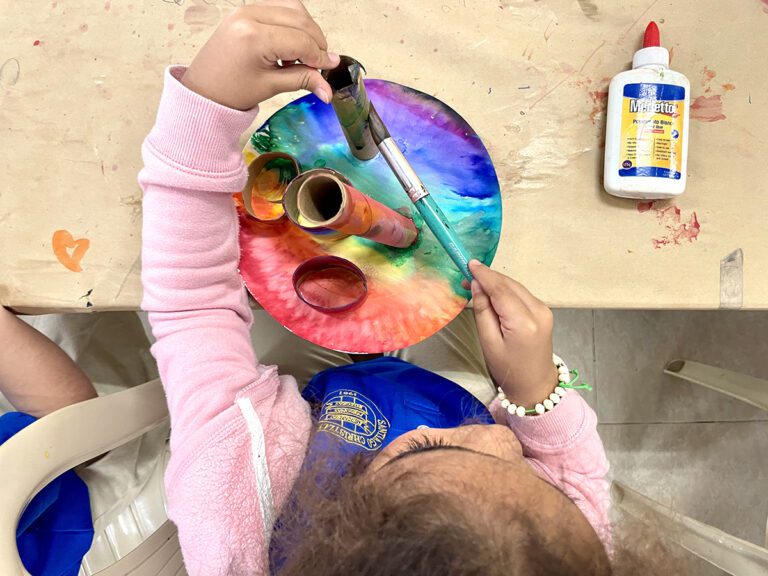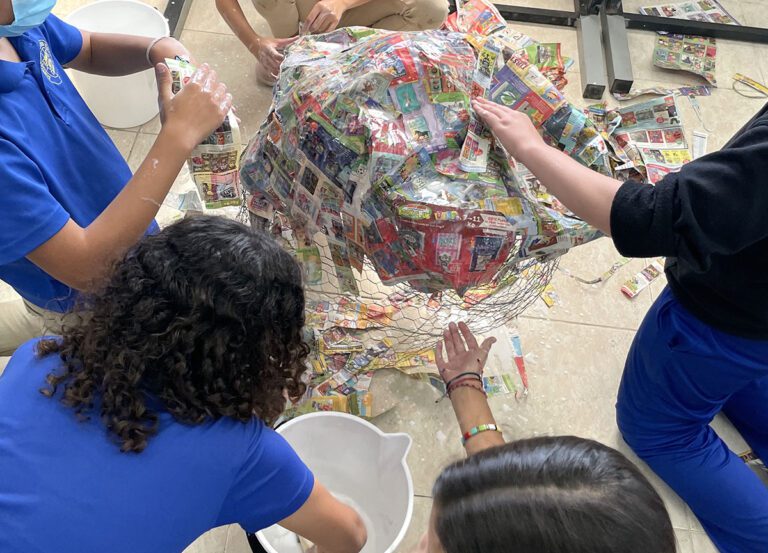Teaching art is fun stuff, but you know what makes it even more fun? Costumes and props! In fact, donning a costume or using a little face paint can actually enhance your teaching practice. Curious to see how?
Here are 5 amazing ways to use costumes and props in the art room.
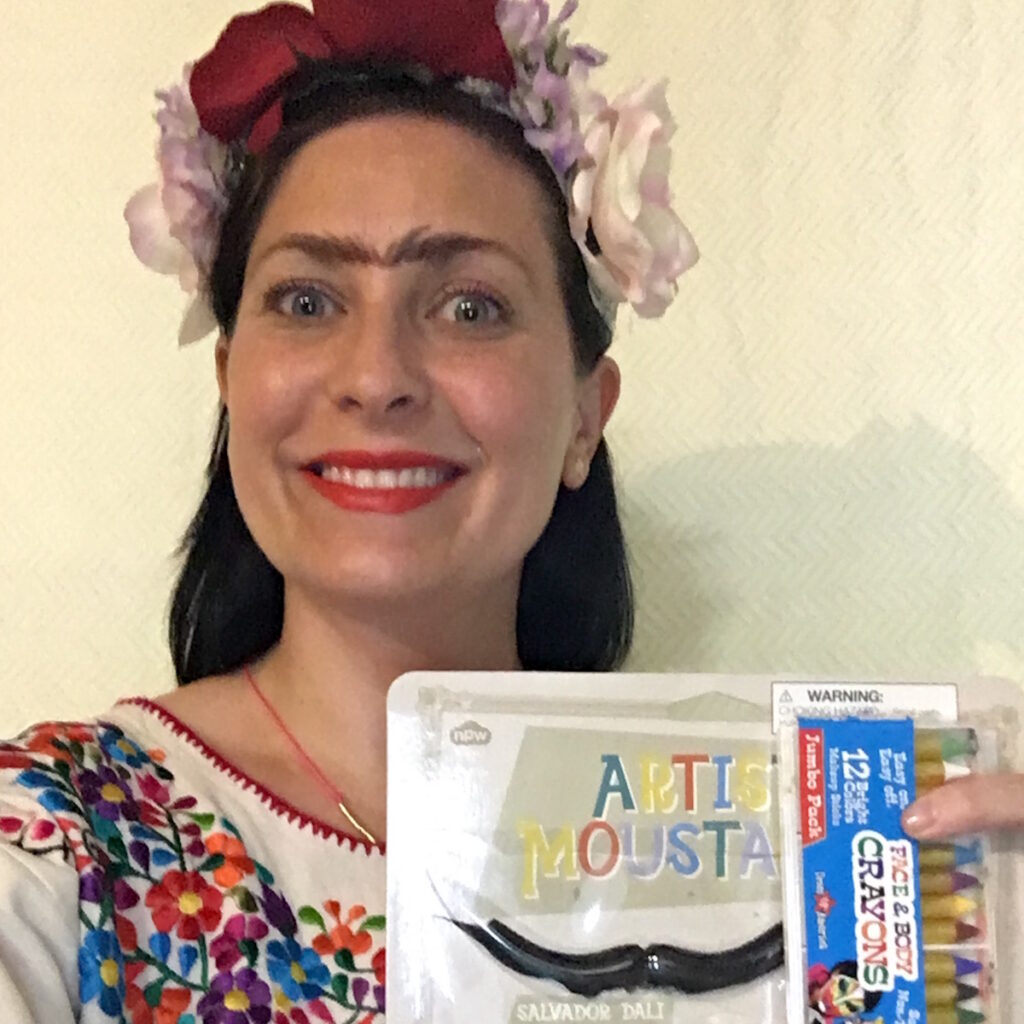
1. Add a little magic to your day.
Think about how a costume or prop can take a mundane task and make it more fun. In my room, when it’s time for cleanup, I select a student to don a magician’s top hat and wave the glittery “cleanup wand.” Then, they utter the magic spell, “Abracadabra, 1, 2, 3! Make the art room as it used to be!” Other students know that’s the signal for restoring the art room to its normal order. What kid doesn’t want to cast a cleanup spell on their classmates?
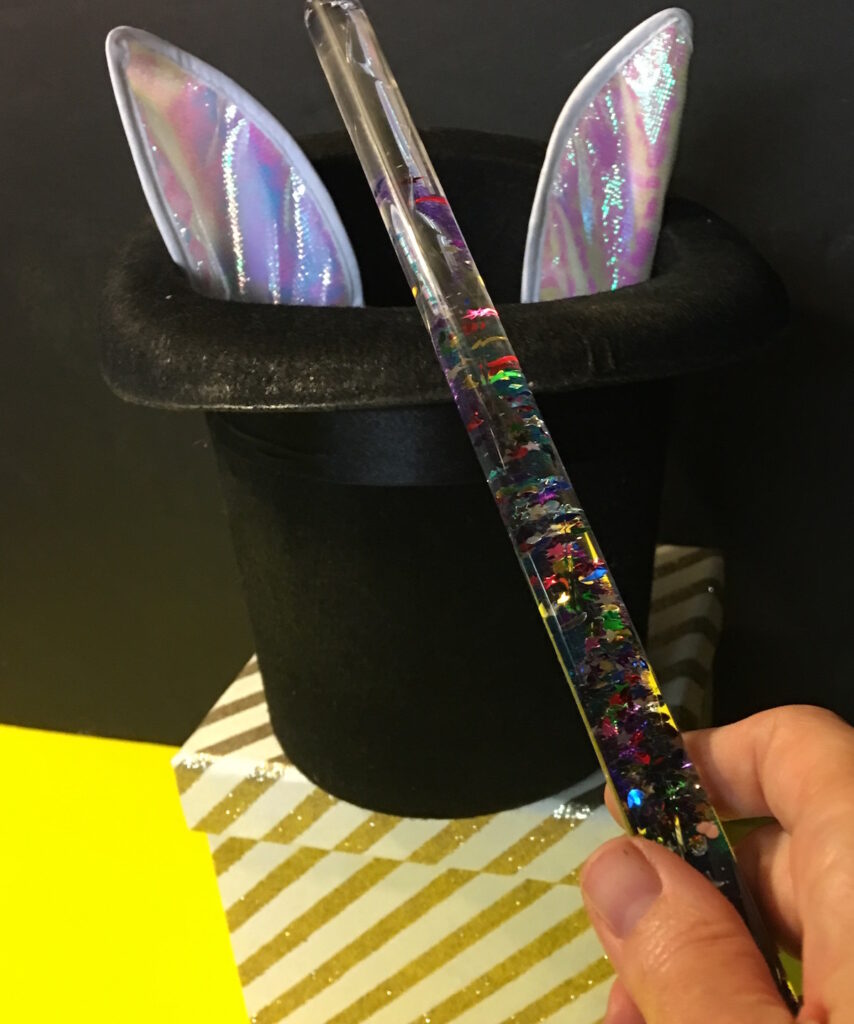
2. Turn yourself or your students into living canvases.
Face paint is an amazing tool for student engagement. In fact, I keep a bunch of face paint crayons in my desk. That way, if I need to get kids’ attention, I just draw something on myself that relates to the lesson. My students are immediately riveted by their nutty art teacher with stuff drawn all over her. Think of yourself as a canvas!
With older students, you can even use face paint as an art lesson material. It’s fun to have them draw on each other in the style of a famous artist and capture the results in photos.
Another idea is to use face paint to enhance your lesson. For example, if I’m doing a lesson with the book When Pigasso Met Mootisse, I’ll choose two students to make each other up as the characters before reading. This way, they can act out each scene and get really into character!
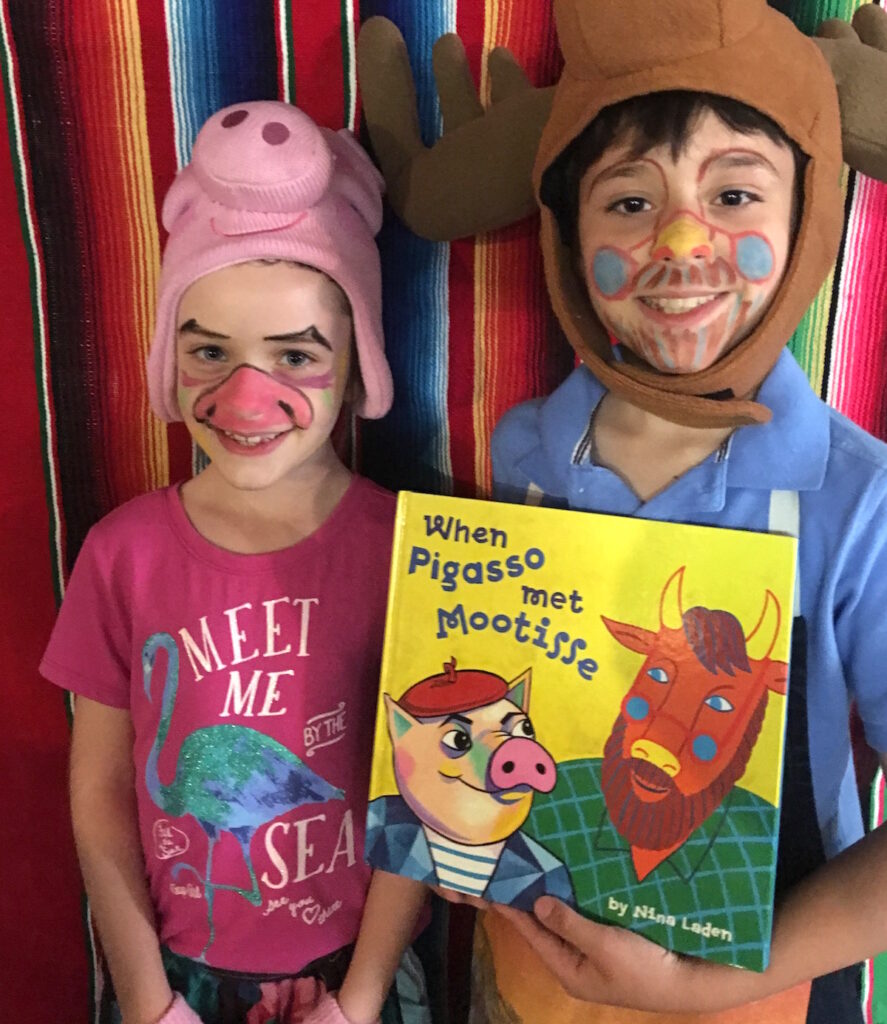
Be sure to check for allergies before applying the face paint to your students. I send home a waiver at the beginning of the year and always make sure to buy non-toxic brands.
3. Transform students into famous artists.
Using props to transform students into an artist you’re studying helps them make a lasting impression. I have a package of handy “Artist Mustaches” that the kids go crazy for.
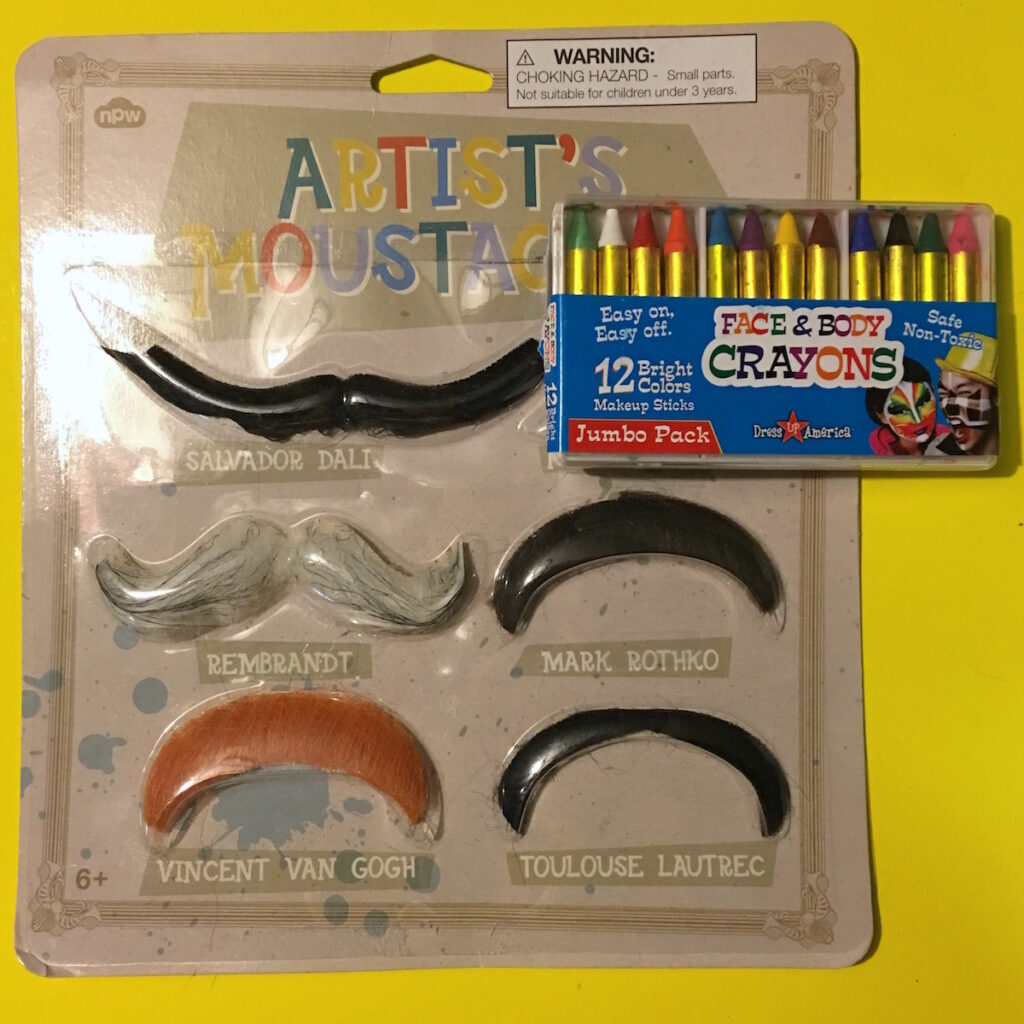
Not only are mustaches trendy right now, but a fair share of artists happen to have memorable facial hair. These are a quick and easy way for kids to play the part.
4. Evoke a time and place with ease.
Think about how a costume or prop can help you give students a better idea of a certain time period or place. For example, whenever my students are doing something related to Egyptian art, I wear my collar and headpiece.
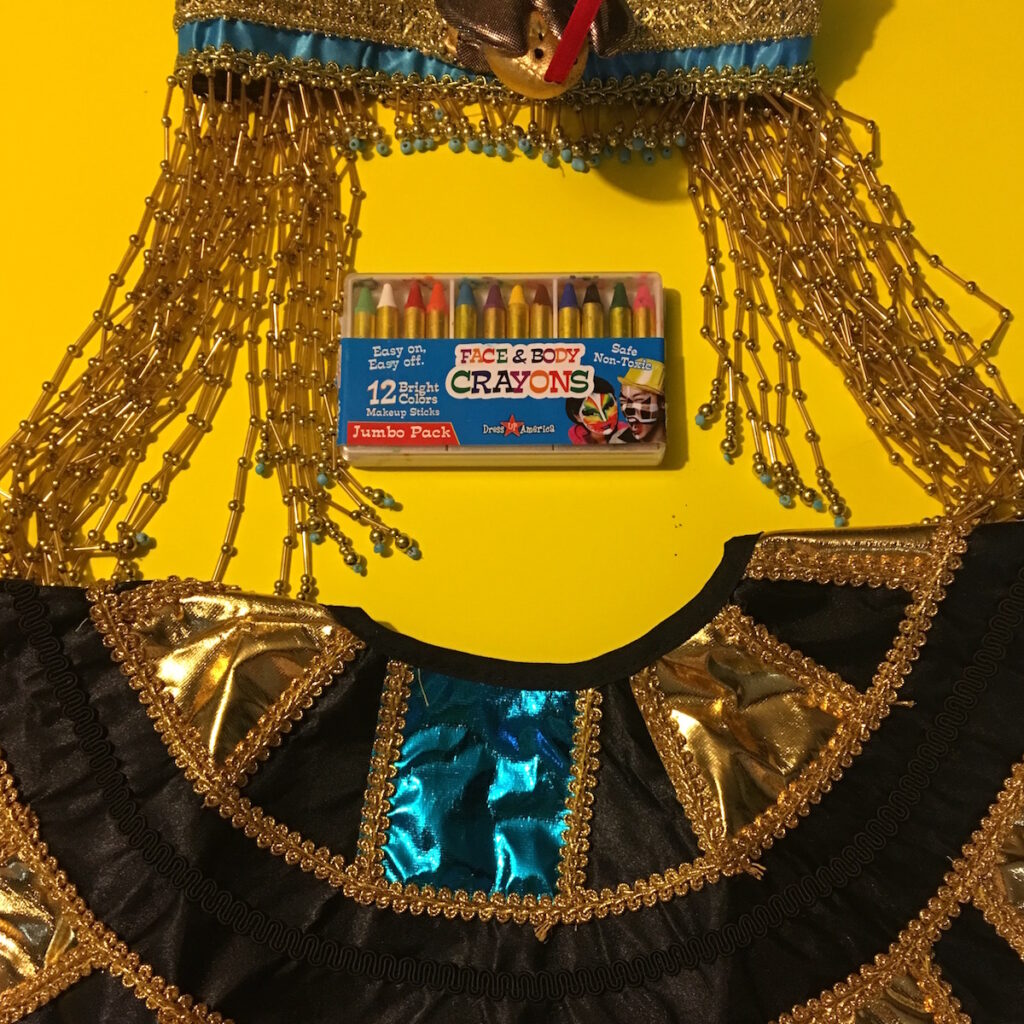
For kids who have no connection or experience with Ancient Egypt, it gives them a visual to begin to connect all the pieces. It also allows you to engage them in a discussion about the difference between costumes and authentic artifacts.
5. Let your props take on a life of their own!
Costumes are a great way to shake things up. Recently, one of my older students adopted an alter ego when he came to my class. He’d throw on a prom dress and a crown and crack bad jokes, referring to himself as “Queen Hilarious.” It became so popular, he started his own web series on our morning TV show. This kind of creativity just can’t be planned. Having costumes around can lead to new possibilities!
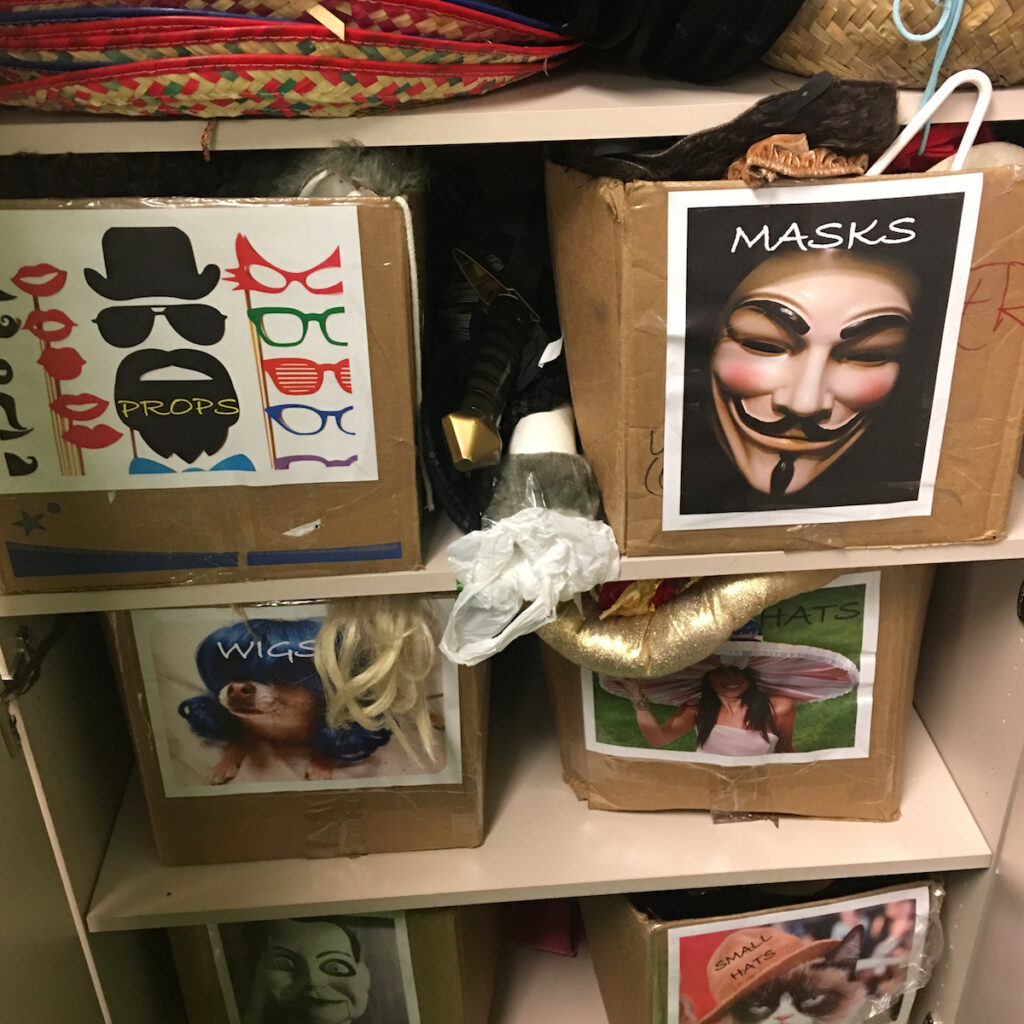
If you’d like to start collecting props and costumes, my advice is to pick up inexpensive bits and bobs when you see them. Dollar stores and party stores right after a holiday are the best places to get bang for your buck. I think you and your students will find your classroom a more exciting and adventurous place once you add costumes and props to your repertoire.
Do you keep props and costumes in your class?
If so, how do you use them? We’d love to see some photos!
Magazine articles and podcasts are opinions of professional education contributors and do not necessarily represent the position of the Art of Education University (AOEU) or its academic offerings. Contributors use terms in the way they are most often talked about in the scope of their educational experiences.
